In The High Himalayas, Women Build A Shared Future For The Snow Leopard
Oct 16, 2025 | Pratirodh Bureau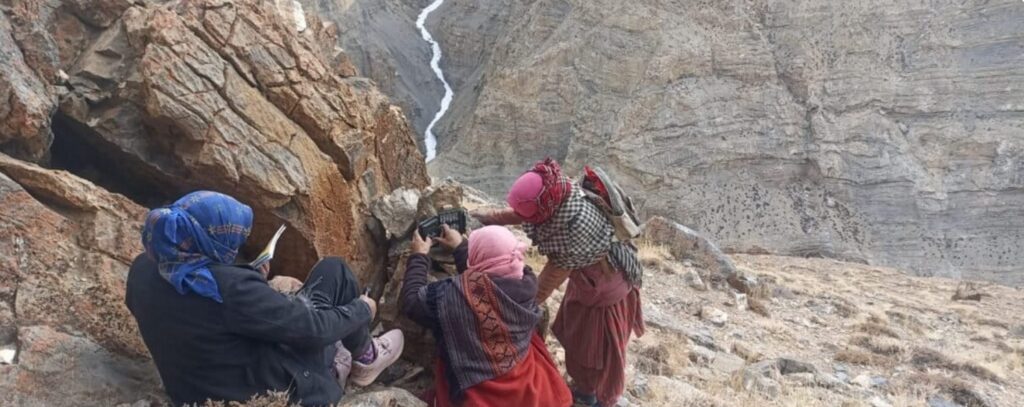
Women from Kibber village set up a camera trap on a steep slope in Spiti Valley during the state-wide snow leopard survey (Image courtesy of Wildlife wing- Himachal Pradesh Forest Department and the Nature Conservation Foundation)
- In Himachal Pradesh’s Kibber village, a team of local women were a key part of the scientific monitoring effort to estimate the region’s snow leopard population.
- Forest officials say collaboration with local communities through Eco-Development Committees, livelihood programmes, and awareness efforts has improved trust and reduced conflict in the Trans-Himalaya.
- Researchers note that climate change and habitat shifts are emerging challenges, but the partnership between science and communities offers a sustainable model for coexistence and resilience in the high Himalaya.
When Lobzang Yangchen first joined a wildlife monitoring team in her village two years ago, she had never touched a computer. Today, the 31-year-old mother of two daughters leads an 11-member women’s team from Kibber that has become central to Himachal Pradesh’s efforts to conserve the snow leopard.
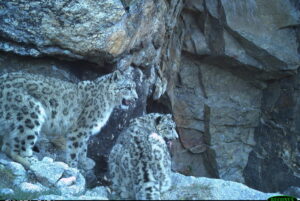
Born in Losar, a village about fifty kilometres from Kibber, Lobzang remembers hearing stories as a child about snow leopards attacking goats and sheep. “I never saw one,” she recalled. “We only heard that they came at night, silently, and that herders had to guard their livestock.”
After she married and moved to Kibber, those stories became real. “Here, losing four or five goats in one night was common,” she said. “People saw snow leopards as a problem, not something to protect.”
When the Himachal Pradesh Forest Department and the Nature Conservation Foundation (NCF) began involving local people in snow leopard surveys, Lobzang decided to volunteer. “People asked why we should protect them if they cause harm,” she said. “Now they understand that our goats are food for them, and they are also living beings who need food.”
The Kibber women’s team worked on every stage of the state’s snow leopard assessment — from setting up camera traps to processing data. Their precision and patience were recognised in the official report, which described their work as having “a significant impact on the quality of data and speed of analysis.”
“I had seen a computer before but never worked on one,” Lobzang said. “Our training began with basic English and then computer lessons. Now we can tag images, process them and maintain the cameras ourselves.”
Her younger sister, Choyyi, a graduate, is also part of the group. “The others in the team have studied till Class 4 or 5,” she said, adding that their training from NCF and the forest department opened opportunities none of them imagined earlier. “When we started, I had to take permission from my in-laws to go for the training and to help with fieldwork. I am thankful they allowed me,” Lobzang said. “Now, when I see the progress of my team and the work we are doing, it feels like we are doing something important for our village.”
Counting the cats
The women’s work formed a vital part of the second state-wide snow leopard survey, conducted by the Wildlife Wing of the Himachal Pradesh Forest Department in collaboration with NCF. The survey estimated 83 snow leopards in the state, with the true number likely between 67 and 103, up from 51 individuals in 2021.

Camera traps placed across 26,000 square kilometres of snow leopard habitat recorded 44 individual cats. The survey also produced the first photographic evidence of Pallas’s cat in Kinnaur and confirmed the presence of the woolly flying squirrel in Lahaul.
In his foreword to the report, Amitabh Gautam, Principal Chief Conservator of Forests (Wildlife), described the findings as “a milestone for high-altitude conservation.” “This remarkable achievement reflects Himachal Pradesh’s commitment to preserving its high-altitude ecosystems,” Gautam wrote. “The effort was only possible because of the participation of local teams and communities who know the terrain best.”
While talking to Mongabay India, Preeti Bhandari, Chief Conservator of Forests (Wildlife), said, “This survey was completed in just one year, compared to three years for the previous one. It shows how our capacity for large-scale monitoring has improved and how much trust has grown between the department and local communities.”
Building trust on fragile ground
For officials on the ground, that trust of the communities has been hard-won. Mandar Jeware, who served as Deputy Conservator of Forests (Wildlife) in Spiti from August 2023 to June 2025, said the region’s unique cold desert ecosystem supports both wildlife and traditional agro-pastoral communities that have long co-existed with scarce resources and harsh weather.
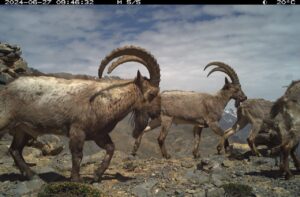
“Spiti has a unique cold desert ecosystem with wildlife striving for scarce resources and the community trying to coexist with harsh weather, along with frequent wildlife interactions,” he said. “The landscape is fragile, being a Trans-Himalayan area susceptible to climate change. Increasing tourism, development aspirations and presence of armed forces in rangelands are creating pressures that reduce space and increase competition for resources between people and wildlife.”
He said the department’s priorities have been to minimise these pressures through community-led tourism management, awareness programmes, and mitigation measures in new development projects.
“Landscape-based and community-led management has been a key pillar of our work,” Jeware said. “Spiti was the first snow leopard landscape to have a landscape-based conservation plan under Project Snow Leopard’s inception in 2009.”
Since then, the Forest Department has worked closely with communities through Eco-Development Committees (EDCs) in Kibber and Chicham, and Biodiversity Management Committees under the JICA project. These committees help manage winter tourism, promote plantations of poplar, willow, and seabuckthorn, install predator-proof corrals, and run feral dog sterilisation drives in collaboration with NGOs.
“Any effective conservation initiative has to be community-led,” Jeware said. “During winters, people get livelihood from snow leopard sighting tourism and now actively cooperate to ensure wildlife and its habitat are not harmed. Communities, particularly women, also play an active role in monitoring wildlife through camera traps and analysis of images.” He said these small initiatives have strengthened trust and created a sense of shared responsibility.
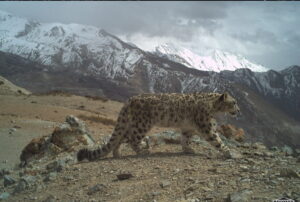
“Eventually, the communities who have been looking after this landscape for hundreds of years should be in charge of sustaining it with facilitation from the Forest Department.”
His colleague, CCF Bhandari, said this approach of close collaboration with communities has become central to the state’s conservation work.
“We processed more than eight lakh (800,000) photographs for this survey, many with the participation of local women,” Bhandari said. “We make people aware that the snow leopard is a flagship species and that tourism is their main source of income. People visit these areas to see this majestic creature, so conservation and livelihood have become closely linked.”
Bhandari said collaboration is not limited to surveys or awareness meetings but extends to everyday life in these remote villages.
“Our officers help in daily matters, road repair, small issues, and people in return help protect wildlife,” she said. “We also run livelihood, soil conservation, and plantation projects that create a sense of shared responsibility.”
Recognition for a unique landscape
Spiti Valley, known for its fragile Trans-Himalayan ecosystem and deep cultural connection with nature, has now been included in the Cold Desert Biosphere Reserve (CDBR), a UNESCO-recognised network that promotes the balance between conservation and community livelihoods.
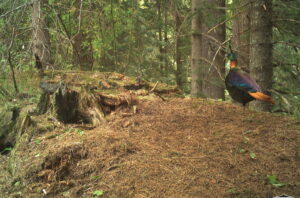
Jeware said the recognition reflects the valley’s long-standing harmony between people and nature.
“Spiti has long been a testament to the unique relationship between man and biosphere with its culture and Buddhist ethos of peaceful coexistence and non-violence towards all living beings,” He said. “Inclusion of Spiti’s CDBR not only provides international recognition but also brings Spiti on the world map. It will help in better monitoring of this fragile landscape in the future, build awareness among tourists and locals, and strengthen community livelihoods through sustainable tourism and conservation-based income.”
He added that the biosphere designation opens new avenues for funding and collaboration.
“It will help in capacity building of communities and attract funding for community-led wildlife conservation due to its international visibility,” he said. “This will ultimately strengthen local resilience and make the landscape more sustainable.”
Beyond the snow leopard
As communities and scientists worked together to study snow leopards, their cameras also captured something unexpected, another elusive mountain species rarely seen in India. The state-wide snow leopard survey did more than count big cats. Camera traps in Kinnaur’s Hangrang Valley captured the first photographic evidence of the Pallas’s cat (Otocolobus manul) in the state. The record came from three sites between 3,900 and 4,100 metres, where researchers obtained 19 images of the small wild cat moving through rocky slopes.
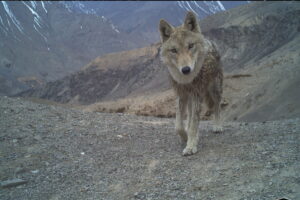
Charu Sharma, the study’s lead author from NCF, said the finding shows how research on flagship species like the snow leopard can benefit others that share the same habitat.
“This record came through large-scale camera trapping for snow leopards. It expands our understanding of the Pallas’s cat’s range in India and shows why smaller, lesser-known species must be part of conservation planning,” she said.
The Pallas’s cat is listed in Schedule I of India’s Wildlife Protection Act and Appendix II of CITES. Although globally classified as least concern, it faces threats from habitat loss, free-ranging dogs, and tourism disturbance. The discovery highlights that protecting the snow leopard also safeguards many lesser-known species of the Trans-Himalaya.
A changing mountain
The latest report also points to environmental shifts that could affect the species’ future. “Some snow leopards have moved slightly to lower elevations, while common leopards have been seen higher up,” Bhandari said. “Snowfall has reduced, glaciers are melting, and maintaining habitat integrity is becoming a major challenge.” The Future Directions section of the report calls for continued camera trapping every three to five years, integration of climate adaptation measures, and the inclusion of local knowledge in all plans. “Blending scientific monitoring with traditional understanding,” the report says, “is key to long-term sustainability in the high Himalaya.”
For Amitabh Gautam, the PCCF (Wildlife), the snow leopard work shows how science and community collaboration can be scaled up. “By conducting two full-scale snow leopard assessments, Himachal has set a model for other Himalayan states,” he wrote. “Promoting traditional practices that have long preserved these habitats and fostering synergy between science and community will create a sustainable model for the future.”
Following the completion of the survey, the Himachal Pradesh Forest Department and the Nature Conservation Foundation (NCF) are preparing a draft plan for the conservation and management of snow leopard habitats across the Trans-Himalayan landscape. The plan focuses on integrating scientific research, community participation, and climate resilience into one framework.
The proposed landscape plan aims to protect threatened species, reduce human-wildlife conflict, and promote sustainable livelihoods in regions such as Hangrang Valley, Spiti, and Lahaul. It also includes measures for regular population monitoring, improving waste management, and addressing the impacts of tourism and climate change.
Deepshikha Sharma from NCF’s High Altitude Programme said the plan reflects the collaboration between researchers and forest officials. “The plan is developed based on the inputs of forest officials and NCF and is a holistic approach towards research and conservation of the snow leopard habitats. NCF is committed to working with the department and stakeholders to ensure the communities and the habitats benefit from conservation action.”
Once finalised, the plan will serve as a long-term roadmap for conserving Himachal’s high-altitude biodiversity while ensuring that communities remain central to decision-making.
Amid these plans and policies, the people of Spiti continue their quiet work on the ground. In Kibber, Lobzang now divides her time between home and her work with the camera traps. Her elder daughter, who is eleven, often looks at the snow leopard photographs with her.
“When I was a child in Losar, we only heard stories about snow leopards,” Lobzang said. “Now, because of our efforts, our children can actually see their photographs. This is change.”
(Published under Creative Commons from Mongabay India)
